
Bitoque. Literally: the horse-riding steak. It’s a Portuguese comfort food classic, dished out daily in dining establishments up and down the country. It’s basically national heritage. There are polls about where to get the best one in Lisbon, and it’s always on the menu. Even if it’s not, ask nicely and they’ll definitely make it for you.
Bitoque reminds me of something I used to have when I was a kid, only then it was called steak, egg and chips. Throw on a heap of rice and a decadent pan sauce, maybe some pickled carrots and a salad, and you’ve got Bitoque á Portuguesa. If there’s any ‘definitive’ Portuguese-style steak dish, it’s this.
Surprisingly, I found this one of the hardest recipes to nail down. It took me at least half a dozen tries to replicate a really solid bitoque from a solid tasca. Not only because of all of the moving parts – my kitchen isn’t set up for dishing out fries and rice on demand – but also trying to navigate which cut of meat to use, the ideal constitution of the pan sauce, and various other details which many people find uninteresting, but that I will easily get obsessed with.
The steak
Bitoque is usually made with a cheaper cut of beef or veal – vaca or novilho – cooked rare to medium-rare. Rump or loin is preferable. I used to think it was made from horse meat (honestly). The egg rides the horse, but the horse is mostly definitely made out of beef. It should be a fairly thin cut, but not prego no pão thin.
A 200g cut of rump or loin can be made more tender via the art of smashing. Get a meat tenderizer and go for it. Also remember to trim off the large bits of fat.
After much to-ing and fro-ing, I’m satisfied that a tenderised 200g bife de vazia – sirloin rump steak – is the ideal cut for bitoque. It could technically be whatever cut you want, but I find this one is succulent, isn’t so thin that it overcooks quickly (this is a rare/medium-rare dish) and isn’t too dense so that it doesn’t take on the other flavours.
The way to treat it is as follows: get the beef to to room temperature, trim off excess fat, tenderise with a meat hammer, season both sides with salt and pepper, add the steak to a pan over medium-high heat with olive oil, garlic and a bay leaf, and sear for 2 minutes (or just under) on each side.
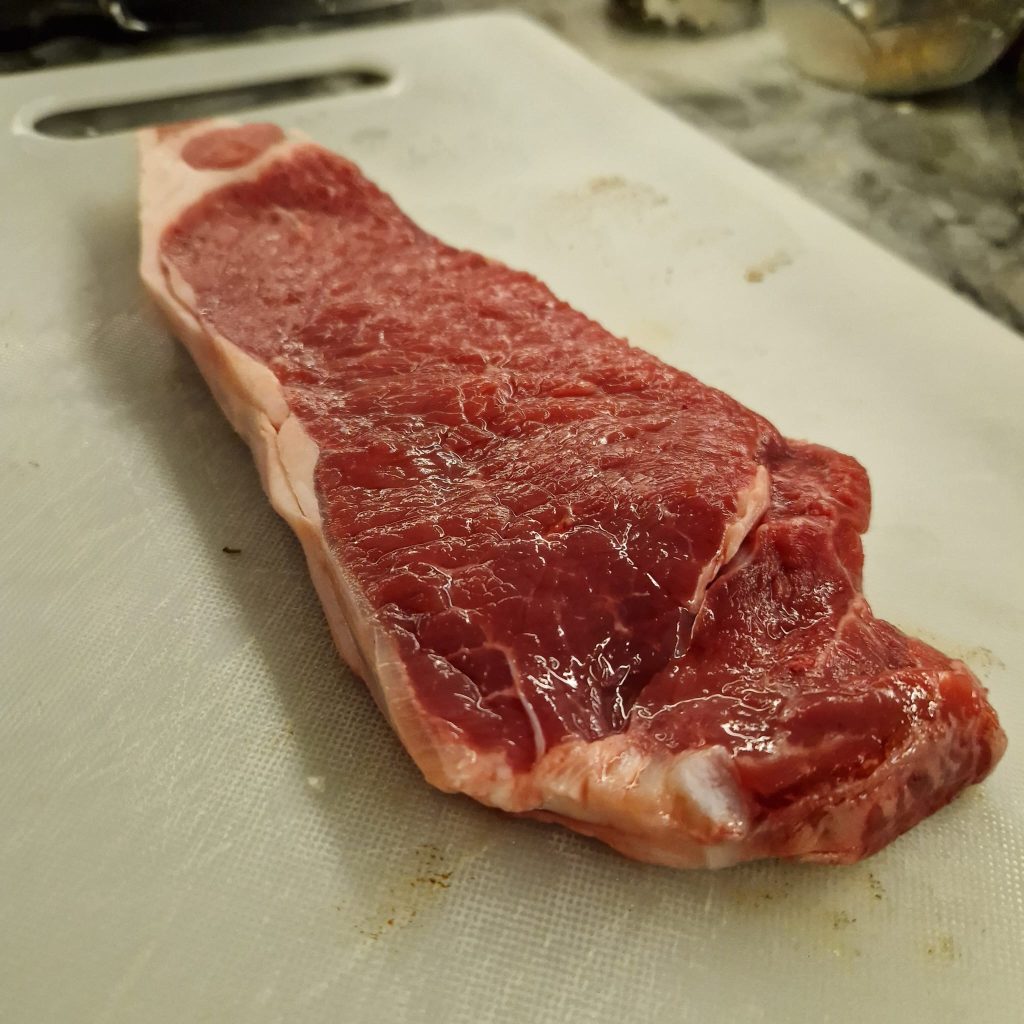
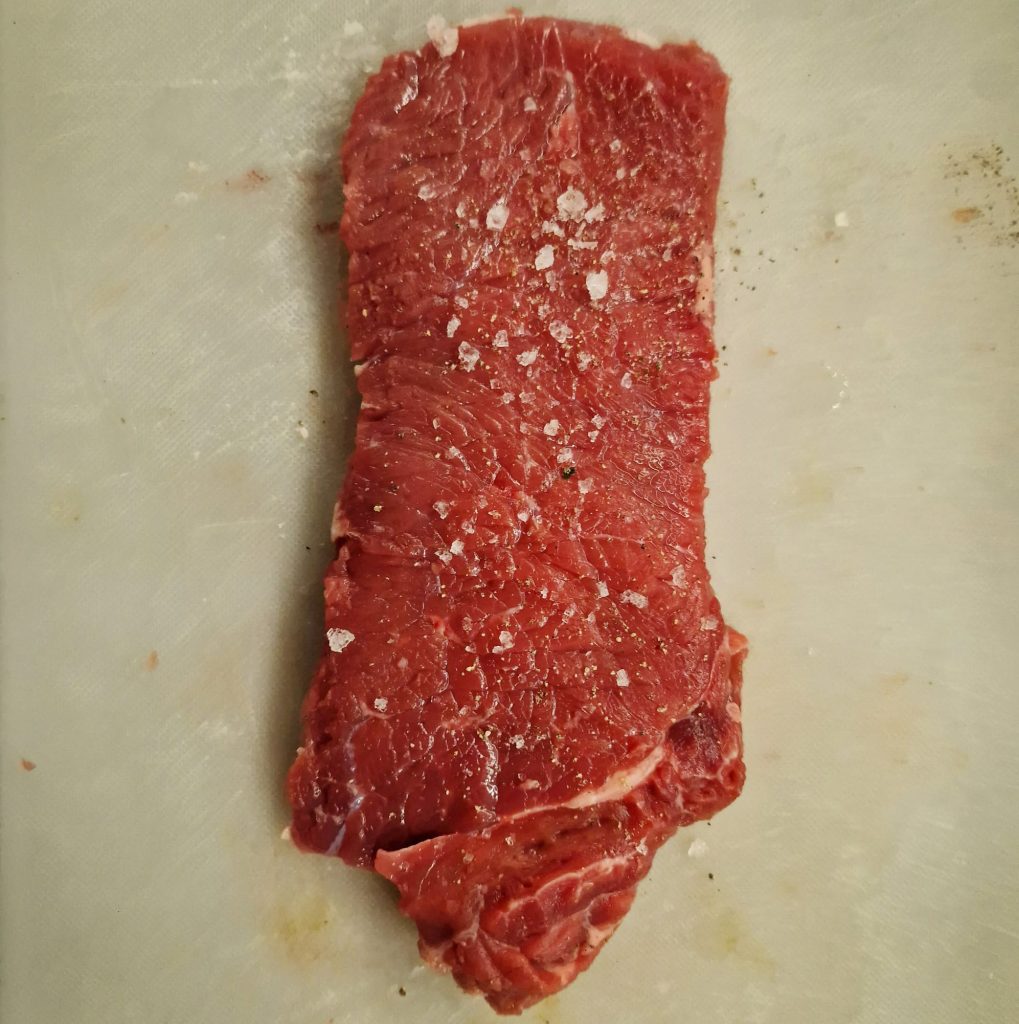
Remove, let it rest, and use the leftovers in the pan to make a pan sauce.
Make a pan sauce
Some bitoques you’ll get in a restaurant have the pan sauce, some don’t. But I have it on good authority that what separates a bitoque from, say, a prego no prato, is the pan sauce.
It took a few tries to get the sauce right. Here’s what to do.
After the steak has seared, add white wine to deglaze, set the heat to high and cook down for 2-3 minutes to thicken by just over half. Then, add condiments.
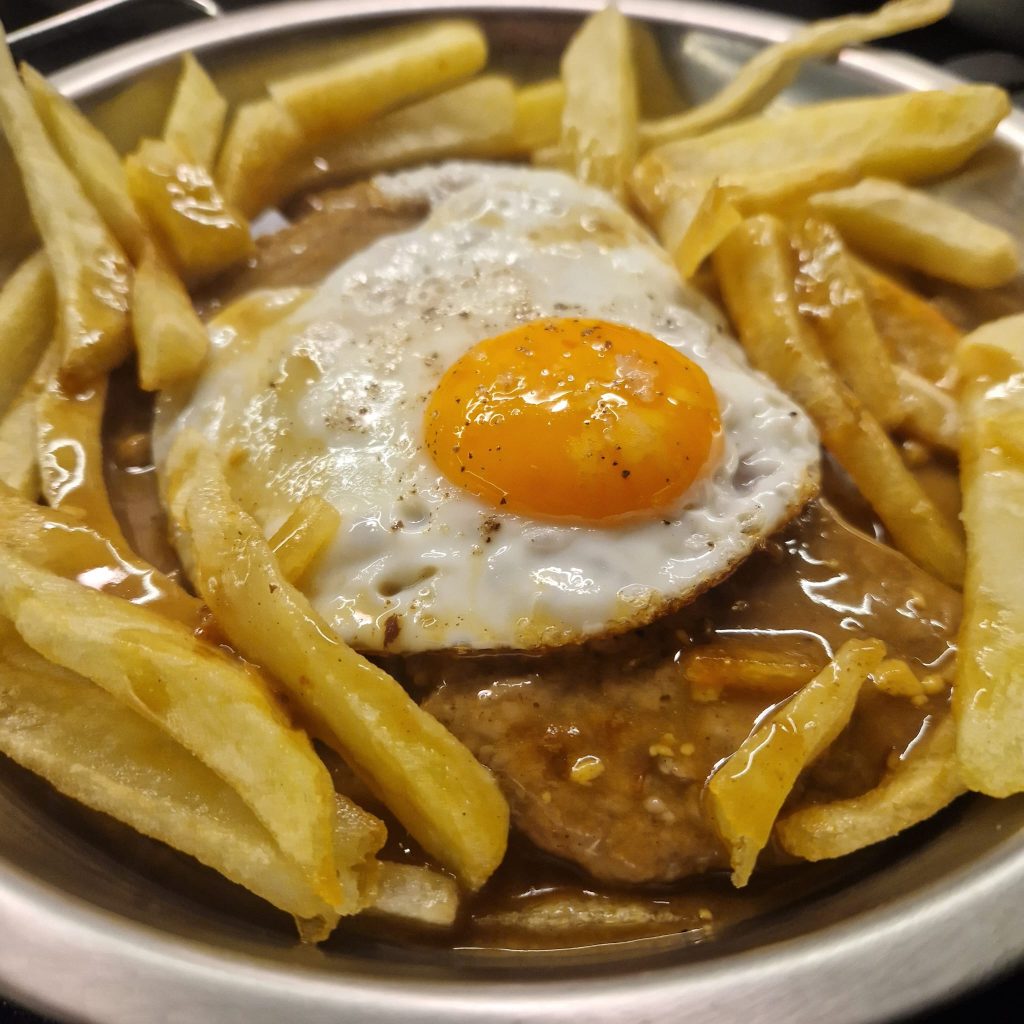
Dijon mustard didn’t do the trick. It was a bit too bitter – dare I say complex – for the bitoque. For me, the best flavour was the straight-up bifana-style table mustard. Plus a touch of Worcestershire sauce, readily available in Portugal as molho ingles. Go in with a dash of those for a couple of minutes, then, off the heat, add butter and incorporate slowly into the sauce.
Once the pan sauce is done, you add the steaks back into the pan to reheat, and quickly assemble the rest of the plate: fries, rice and egg.
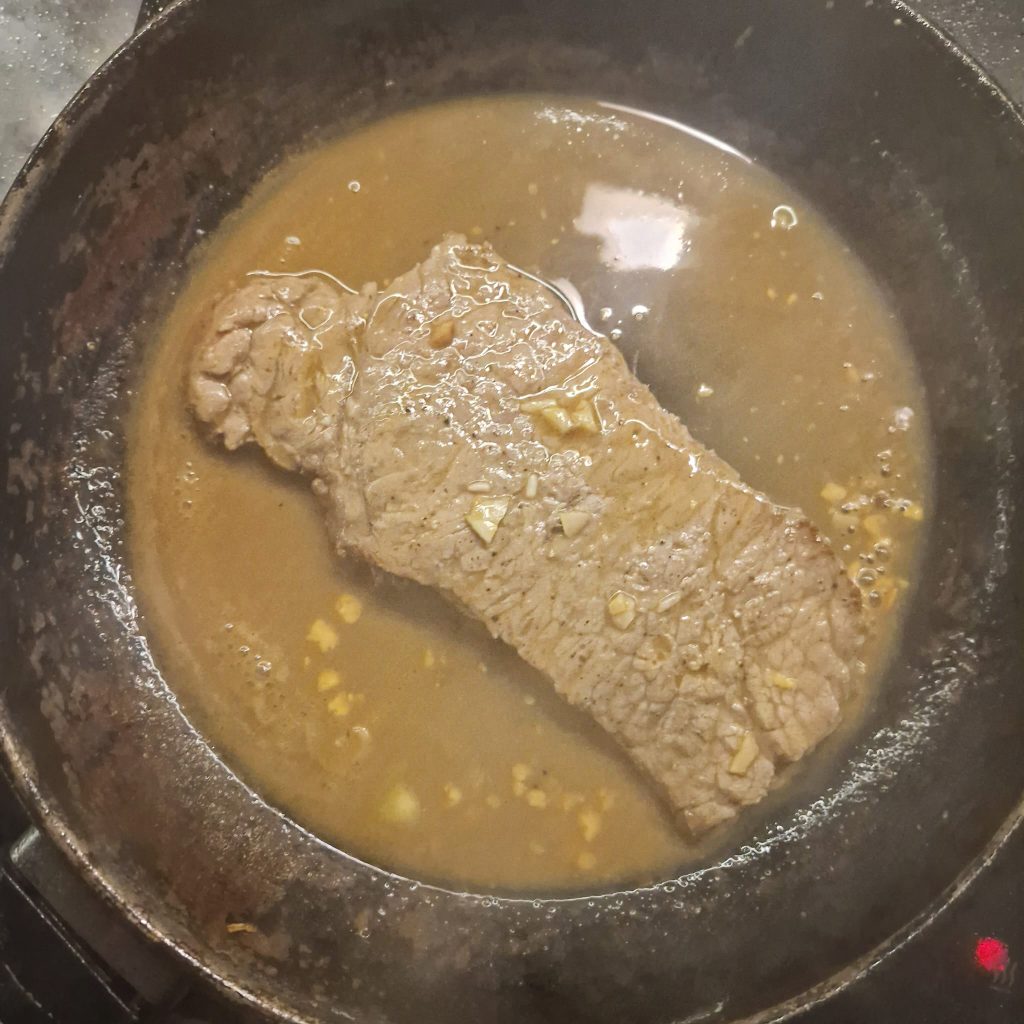
Rice and chips
In Portugal, bitoque, like loads of other traditional dishes, is served with rice and fries/chips. Apparently, this might to do with Portugal’s colonial history. Potatoes from the Americas, rice from Asia. Not sure. What I do know is that this particular carb overload is perfect for mopping up the silky, garlicky pan sauce.
Recommendations here are arroz agulha (if you can’t find it, sub for another long-grain white rice) and red frying potatoes (which have less starch and fry better).
Other notable inclusions could be simple salad of tomato, lettuce and onion, or home-made pickles. I’ve even seen bitoque served with olives on the plate, although I wouldn’t personally do that.
If I’m cooking at home, I’ll usually do one or the other, because, again, I do not have access to a tasca kitchen. Logistics. Here, though, I’ve gone in with both.
Since the meat cooks quickly, and the pan sauce comes together in a couple of minutes, it’s wise to start with the fries first. I’d say: put the rice on, chop, soak and drain the potatoes, give them an initial deep fry at 60°C (140°F), leave them to cool and then begin with the ‘main’ part of the dish.
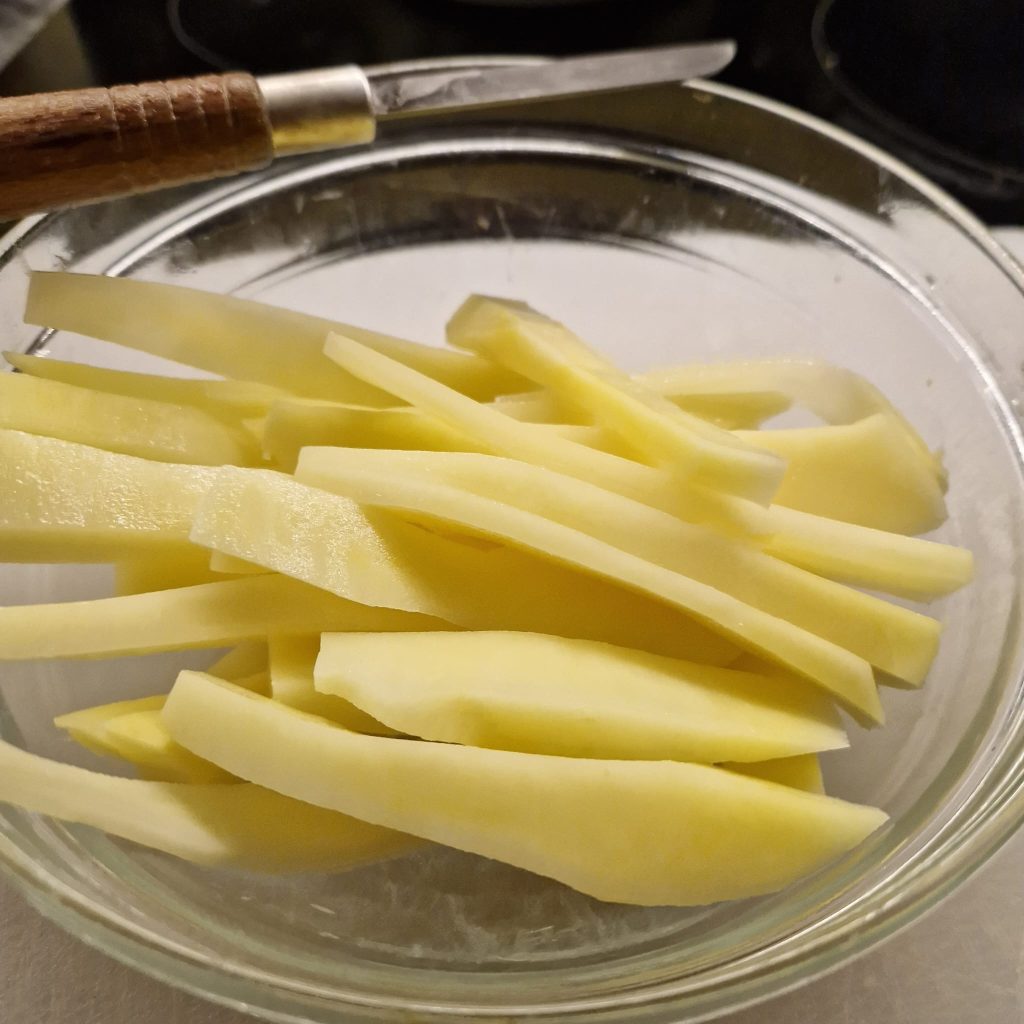
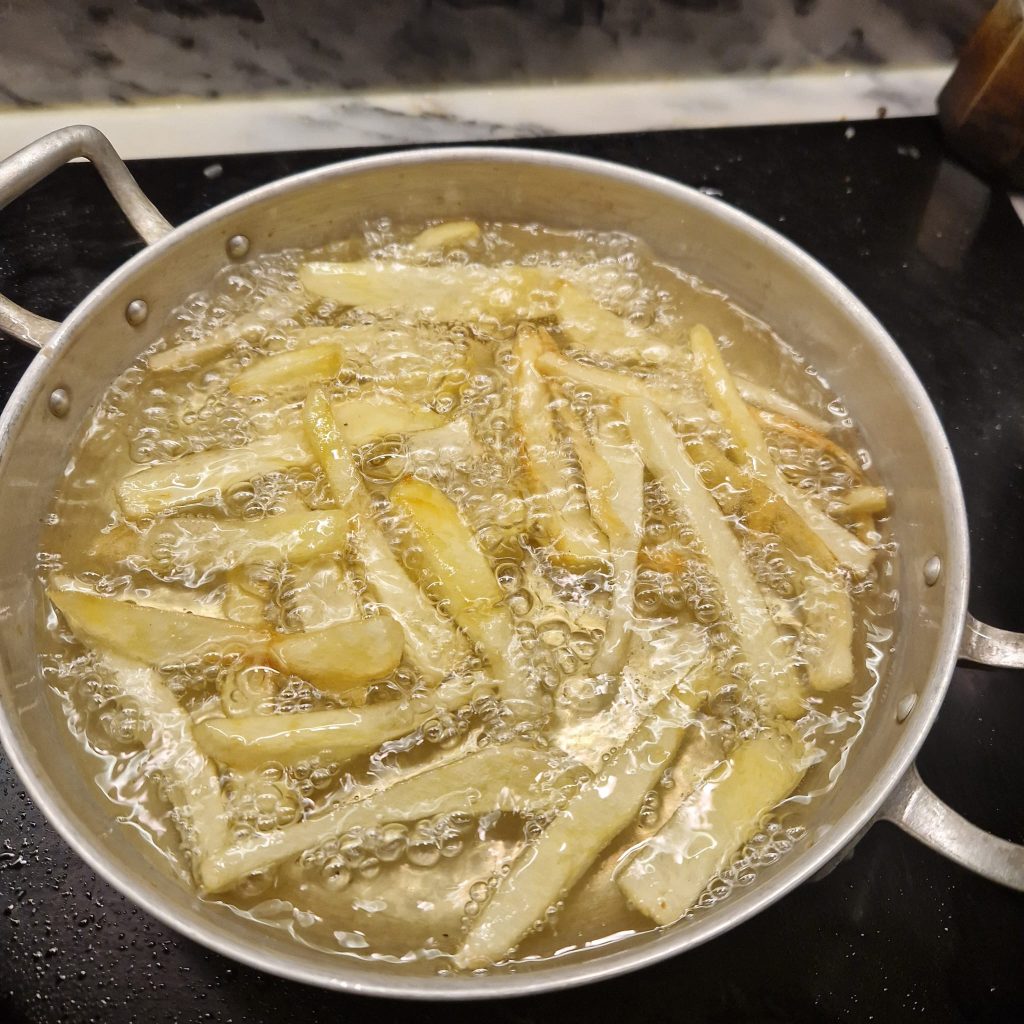
I saw this video where a lovely lady explains how to make tasca-style chips. The secret is a lot of washing, a touch of white wine vinegar, and two different deep fries – one at 60°C (140°F) and one at 180°C (360°F). Mine didn’t come out as golden as in some pictures, but they were the real deal. Trust the tasca lady.
Egg rides the steak
The bitoque’s grand finale is the plating of the ovo a cavalo (‘horse-riding’ egg), a perhaps gratuitous addition but one which does seem to make lots of sense. It’s the part that gives the name to the dish, so I guess it’s non-negotiable. That specific tradition is said to come from Galicia, likely with the influx of Galician immigrants to Portugal in the early 20th century.
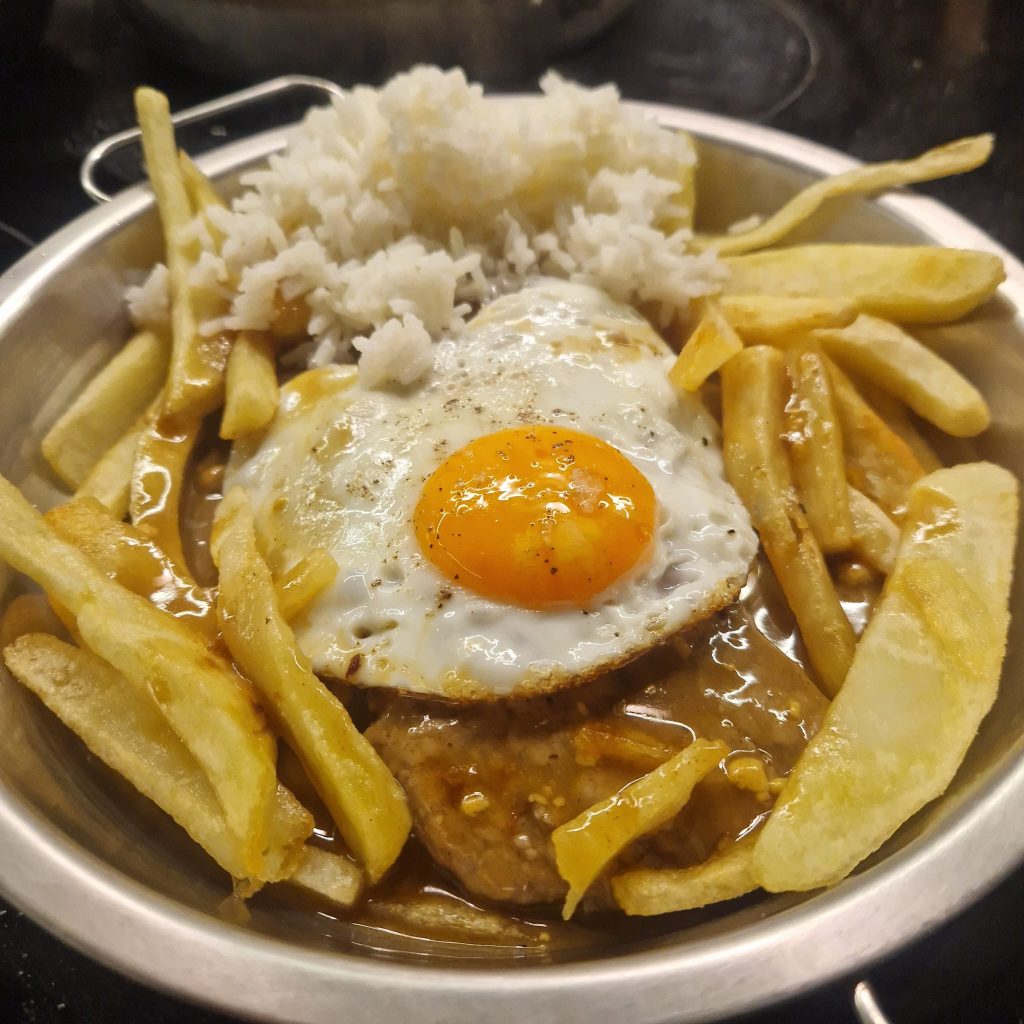
1 egg, sunny-side up with a touch of olive oil or vegetable oil, a sprinkle of salt and pepper and a little bit of basting will do the job. This is the very last thing to do before diving head first into the decadent assembly on your plate. Leave the cleaning for later.

Bitoque à Portuguesa
Ingredients
The bitoque
- 200 g sirloin steak or rump
- 1 tbsp olive oil
- 1 bay leaf dried or fresh
- 2 cloves garlic roughly chopped
- 100 ml white wine or vinho verde
- 1 tbsp yellow table mustard
- 3/4 tbsp Worcestershire sauce
- 1 tbsp butter
- Sea salt and freshly ground black pepper to taste
- 1 egg medium-sized
- 1/2 tbsp vegetable oil
- Sea salt and freshly ground black pepper To taste
- Table salt to taste
The potatoes
- 4-5 red potatoes medium-sized
- 200 ml vegetable oil or enough to cover potatoes in pan
- 2 tbsp white wine vinegar
The rice
- 150 g arroz agulha or other long-grain rice
- 200 ml water hot
- 1/2 clove garlic roughly chopped
- 1 small onion, peeled and derooted or 1/2 large onion
Instructions
Bitoque com ovo a cavalo
- Trim off excess fat, season both sides with sea salt and black pepper, and tenderise with a meat hammer. If not already at room temperature, leave to rest at room temperature for at least 10 minutes (but no longer, as the salt will begin to pull moisture from the beef). Meanwhile, roughly chop 2 garlic cloves.
- Add the olive oil, bay leaf and garlic to pan over medium-high heat.
- Add the steak and sear for 2 minutes, without moving it. This helps the crust to develop. If your garlic looks at risk of burning, remove it or place it on top of the steak. If cooking two steaks at once, make sure they each have sufficient cooking space to not overcrowd the pan and begin to steam.
- Flip the steak over, and sear on the other side for another 2 minutes.
- Remove steak from the pan and leave to rest on a surface – don’t touch it!
- Maintaining the same heat, add around 100ml white wine to the pan, scrape up any brown bits (fond), and add the mustard and Worcestershire sauce. Reduce by just over half or until you reach a thick consistency.
- Meanwhile, in a separate pan, heat a touch of vegetable oil over medium-low heat, crack egg and drop into pan to cook sunny side up, basting with the oil and seasoning lightly with sea salt and black pepper, until whites become solid.
- Quickly add the steak back to the pan, add the butter and, using a spoon, gently incorporate the butter into the pan sauce.
- Plate steak with the sauce all around it, place egg on the steak, and serve with fries and rice!
The potatoes
- Peel the potatoes, slice into 4 or 5 parts lengthwise, then cut those discs lengthwise too into 4 or 5 chips.
- Add potatoes to a bowl and wash well under cold running water, lightly massaging the potatoes with your hands as you go to remove as much starch as possible (give them at least 2 changes of water). Once the water no longer runs cloudy, run the tap again with cold water until potatoes are just covered, add about 2-3 tablespoons of white wine vinegar, and reserve for about 5 minutes.
- Remove potatoes from water and dry well with a paper towel or clean cloth. Meanwhile, heat the vegetable oil in a frying pan or deep fryer (enough to cover the potatoes) until the temperature reaches 60°C (140°F). On an electric hob, this should be just under midway on the dial; otherwise, use a thermometer to check the temperature.
- Once the oil reaches 60°C/140°F, add the potatoes and deep fry for three and a half minutes.
- Remove the potatoes from the heat, shake well to remove oil, and allow to cool. Meanwhile, reheat the oil to 180°C (360°F). If you dip the handle of a wooden spoon in the oil and small bubbles form around it, it's close to 180°C.
- Fry the potatoes a second time for 3 and a half minutes, or slightly longer if needed (watch for the golden colour), moving them around with a fork as they become golden and crispy.
- Add golden, crispy fries to a bowl, season to taste with table salt or another very fine salt which is able to get between the ridges of the potatoes, shake well to mix and serve.
The rice
- Heat a small saucepan to medium heat with 1/2tbsp olive oil; meanwhile, roughly chop 1/2 clove of garlic.
- Add garlic to the pan and fry until just beginning to turn golden. Add the rice, mix well, and make a small opening in the middle of the pan for the onion.
- Peel a small onion (or half of a large onion), chop off the root, and place it in the middle of the pan surrounded by the rice.
- Cover with hot water (the ratio here should be 1:1.5 between rice and water), close the pan with a lid, and cook for 15 minutes on medium-low heat.
- After 15 minutes, turn off the heat and leave to rest, steaming the rice with the lid on for a further 5 minutes. If the rice is still not cooked to your liking at this point, add a touch more hot water and cook back on the heat for a further 5 minutes.
- Check for salt, and serve!

Leave a Reply